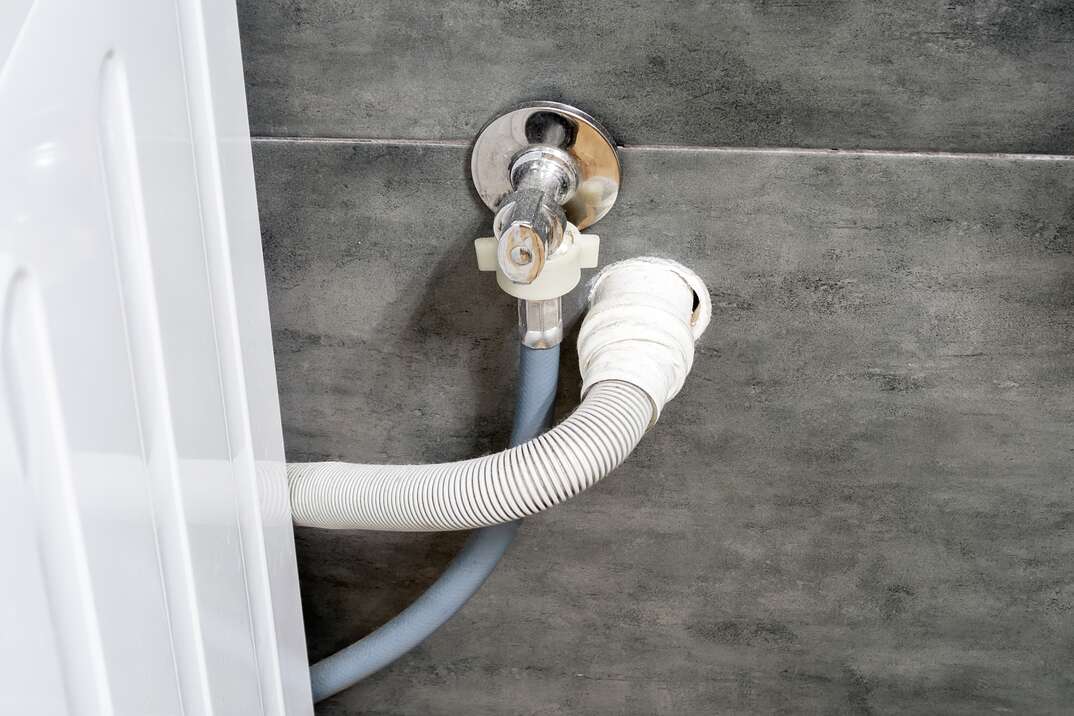The optimal placement of a washing machine with a drain is crucial for effective functionality and water disposal.
But how far away can a washing machine be from the drain? The distance between the washing machine and the drain plays a significant role in determining water drainage efficiency, avoiding potential issues like clogs and leaks.
Hence, I will explore the considerations involved in determining how far away a washing machine can be placed from the drain.
How Far Away Can a Washing Machine Be From the Drain?
The optimal distance between a washing machine and the drain depends on several factors, including the machine’s pumping capacity, the diameter of the drain pipe, and the specific guidelines provided by the manufacturer.
Generally, it’s recommended to keep the distance as short as possible to ensure efficient water drainage and prevent issues like clogs and backups.
Most washing machines can handle a vertical distance of around 3-4 feet (approximately 1-1.2 meters) between the machine’s pump and the drain.
The horizontal distance can also be around 10 feet (approximately 3 meters), but this can vary based on the machine’s power and pump strength.
If the distance exceeds these recommendations, the washing machine’s performance might be compromised, and you might experience problems with draining.
Always refer to the manufacturer’s guidelines and local plumbing codes to ensure you’re installing the washing machine at an appropriate distance from the drain for optimal functionality.

Extending a Washing Machine Drain Hose
The extension of a washing machine drain hose should be done cautiously to avoid drainage problems and potential damage to the machine.
Generally, it’s recommended to keep the extension to a minimum, as longer hoses can lead to poor drainage, water leaks, and other issues.
If you need to extend the drain hose, it’s advisable to follow these guidelines:
- Manufacturer Recommendations: Always refer to the manufacturer’s guidelines and instructions for extending the drain hose. They might provide specific information about the maximum length or offer approved extension kits.
- Avoid Excessive Length: In most cases, it’s best to avoid extending the drain hose beyond 4-5 feet (approximately 1.2-1.5 meters) from its original position. Longer extensions can lead to decreased water drainage efficiency.
- Elevation Considerations: If the drain outlet is at a higher level than the washing machine, ensure that the hose isn’t extended too much vertically, as this can hinder proper drainage due to gravity constraints.
- Secure Connection: When extending the hose, ensure a secure and watertight connection. Use appropriate connectors and clamps to prevent leaks.
- Avoid Kinks and Obstructions: Ensure that the extended hose doesn’t have sharp bends, kinks, or obstructions that could impede water flow.
The Distance Between the Washing Machine and the Waste Pipe
The minimum recommended distance between a washing machine and a waste pipe is 3 inches.
However, if your washing machine is located further away than 3 inches from the waste pipe, you may need to install a pump to help remove the water from the tub during the spin cycle.
Additionally, it is important to make sure that the washing machine is level so that it doesn’t vibrate too much and cause damage to the floor or surrounding appliances.
How Far Can a Washing Machine Push Water?
While there’s no fixed universal distance, here are some general guidelines to consider:
- Vertical Distance: Most washing machines can effectively push water vertically to a height of about 3-4 feet (approximately 1-1.2 meters). If the drainage point is higher than this, the machine’s pump might struggle to overcome gravity, leading to reduced drainage efficiency or potential backups.
- Horizontal Distance: Horizontally, a washing machine can typically push water around 10 feet (approximately 3 meters) through the drain hose. Longer distances might require a stronger pump or alternative drainage solutions.
- Elevation and Obstructions: If the drainage point is elevated or if there are sharp bends, kinks, or obstructions in the hose, the effective push distance could be reduced. These factors can create resistance to water flow.
- Drain Hose Diameter: A wider drain hose can handle longer distances more effectively due to increased water flow capacity.
- Pump Strength: High-end washing machines often have more powerful pumps that can handle greater distances. However, even with a strong pump, it’s important to consider other factors like hose diameter and elevation.
Also read: Do Washing Machines Drain Into Septic Tank?
Can You Extend a Washing Machine Drain Hose?
Extending a washing machine drain hose is possible, but it is not recommended.
The reason is that the extended hose may not be able to handle the full water flow, which could cause the hose to burst and flood your home.
If you must extend the drain hose, be sure to use a heavy-duty rubber hose that is specifically designed for washing machines.
Also, ensure that the extension is pitched downhill towards the main drainage pipe so that all the water can flow out.
Finally, check for kinks in the hose and correct them before using your machine.
Conclusion
In the realm of efficient laundry routines, the optimal placement of a washing machine in relation to the drain cannot be overstated. The distance separating these components significantly influences the machine’s functionality and seamless water disposal.
So, how far away can a washing machine be from the drain? As I’ve explored the considerations governing this crucial aspect, it becomes evident that precision matters.
The majority of washing machines are designed to manage a vertical span of approximately 3 to 4 feet (equivalent to about 1 to 1.2 meters) between the machine’s pump and the drain.
These figures, however, are not etched in stone, as elevation discrepancies and hose impediments can reshape the equation.







